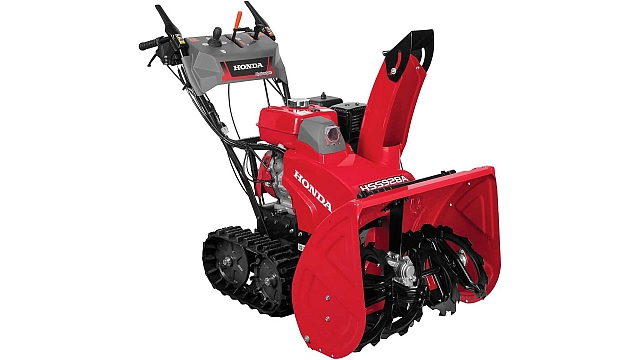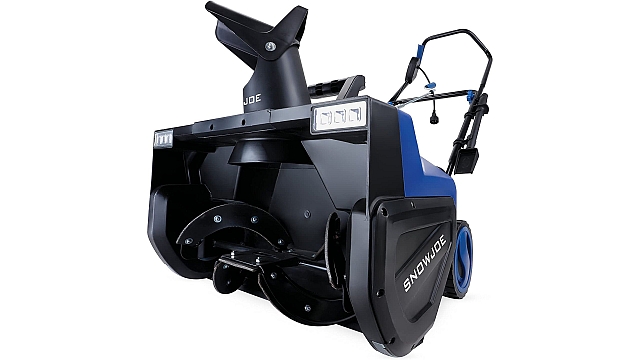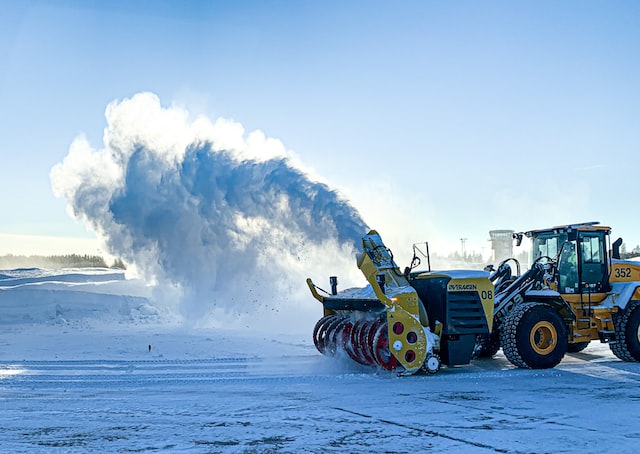Most two-stage snow blowers in excellent operating order should be able to throw snow a distance of at least 20 feet, and even farther, under normal circumstances. Then again, snow will not be thrown very far from a blocked discharge chute. Examine the augers and the transmission mechanism if the chute is not blocked. Broken shear pins will prevent portions of the auger from rotating, and damaged impeller blades will be unable to drive snow through the discharge chute. Check the blades visually for severe wear and replace as necessary. Likewise, check the belt for damage, stretching, or alignment issues. It is time to replace the belt if it is damaged or stretched out.
What distance can a snow blower throw snow?
Generally speaking, regular snow should at least go around 15 feet, whereas cold, powdery snow can be thrown up to 20 feet, and even farther. Wet and heavy mushy snow, on the other hand, may barely fly a few feet or not at all. Many blowers just jam up and become ineffective while attempting to throw soggy snow. Given that smaller quantities don’t seem to offer the auger and impeller sufficient snow to create appropriate throwing force, the snow blower should fling the snow the farthest with between 4 and 8 inches of snow. As a result, you should control your pace according to the gear you are in to avoid going too slowly.
A self-propelled snow blower’s second or third gear should offer sufficient forward momentum to gather enough snow without stressing the machine; if the engine sounds strained, you may simply drop a gear. You can move as fast as you can without straining the engine or losing your grip. However, truly thick snow drifts may need shifting down to first gear to provide the auger and impeller enough time to clear the deep snow bank at the end of the driveway.
The angle of the chute deflector may also affect the snow throwing distance. When the deflector on the chute is practically straight up, the snow blower should throw snow the farthest. The discharge chute normally only becomes clogged while removing the pile of heavy wet snow left behind by the snow plow.
In short, when it comes to snow throwing distance, the texture and depth of the snow both matter.
How far should a snow blower throw snow?
If the snow being thrown by your snow blower is only reaching 10 feet, something may be wrong. Naturally, the consistency of the snow also affects snow throwing distance, maybe more so than the machine itself. For instance, if you run the snow blower while the weather is warm and the snow is wet, then 10 feet is not an unusual distance. However, if the snow is dry, and it is cold outdoors, a snow blower should be able to throw it a lot farther.
From a mechanical perspective, the belts may have an impact on the snow throwing distance. For instance, the snow blower won’t work well if the belts are old, worn out, or loose. In addition, elements like deformed augers, dirty auger bushings, and damaged impeller vanes may impair a snow blower’s capacity to throw snow.
The volume of snow being put into the auger and impeller is another factor to take into account. When a snow blower is chewing through six inches of snow, it will throw snow farther away than if it is simply eating through one or two inches. In order to generate sufficient volume for the impeller to push enough snow through the discharge chute, you actually need to balance the speed of the snow blower with the depth of the snow.
In a nutshell, the larger the machine, the more snow it must consume to throw it up through the discharge chute.
What influences how far snow can be thrown?
The total snow throwing distance of a snow blower is affected by a large variety of factors. It could consist of items like:
- The depth and kind of snow: fluffy snow flies further than wet snow.
- Size of the impeller; specifically, a bigger impeller increases throwing distance.
- The RPM of the impeller determines how far the snow can be discharged.
- The distance between the impeller blades and the interior of the chute.
- The discharge chute’s form and the deflector’s angle.
- A rust-free snow blower can throw snow more effectively, for the reason that wet snow sticks to rusty areas.
As previously mentioned, a number of interrelated factors may have an adverse impact on the total throwing distance of your snow blower. You may try installing a top pulley for your auger that is a little bit bigger. However, using your auger at significantly higher rotation speeds might result in gear case failure. You need to be cautious when making modifications to your snow blower’s operation since you don’t want to wind up with a tool that excels at blowing heavy snow but struggles to remove light snow.
In order to increase throwing distances for thick snow, it is occasionally advised to install an impeller kit to restrict the gap between the impeller blades and the inner metal housing.
How significant is the snow blower’s throwing distance?
The ability to send snow onto your neighbor’s driveway might be good for your ego, but it doesn’t seem practical to use a snow blower with such a long throwing distance on a regular basis. In fact, a throwing distance of more than fifty feet may irritate the neighbors and harm surrounding structures and automobiles. If the wind is really strong, you can even end up with additional snow being blasted back in your face.
A snow blower’s maximum snow throwing distance may not be as significant as the amount of snow it can throw. Really, all you need is just enough throwing distance to clear the snow off of your path. If you fling it too far, the snow may end up on cars, fences, or even garden plants. Nevertheless, it is pointless to get a snow blower if it only tosses snow a few feet away.
Gas-Powered Snow Blower That Throws Snow The Farthest

I have seen some of the Honda track drive snow blowers being mentioned as having the ability to throw snow more than 50 feet away. Even so, these Honda snow blowers are so expensive that they are not really within reach for many consumers.
Similarly, the Ariens Professional Rapidtrak snow blowers are almost just as expensive, even though they also have a maximum snow throwing distance of more than 50 feet. For example, the Professional Kraken 32-inch Rapidtrak snow blower can throw snow up to 60 feet away.
Electric Snow Thrower That Throws Snow The Farthest

I suppose that if you’re looking for an electric snow blower that can blast snow a long way, the Snow Joe SJ627E would be one of your best options. The adjustable chute of the SJ627E turns 180 degrees and may direct the snow discharge up to 25 feet away. It appears to be perfect for removing snow off pathways and driveways. The SJ627E comes with a rubber-padded, rubber-tipped, all-steel auger. The SJ627E clears a route that is up to 22 inches wide by 13 inches deep in a single pass while moving up to 840 pounds of snow per minute. Moreover, the SJ627E has inbuilt LED headlights to illuminate the area for better night visibility and safer snow removal.
Read more: Snow Joe SJ627E Review
Conclusion
All things considered, the maximum snow throwing distance sounds impressive when listed in the specifications of a snow blower. After all, you buy a snow blower to throw snow. Nonetheless, the amount of snow that a machine can handle without bogging down or clogging up might be more important than the maximum throwing distance.
For the most part, two-stage gas-powered snow blowers can throw snow far enough to get the job done. I do not think that there is a need to try and set a new world record for the snow blower that can throw snow the farthest, unless you have a large property, or a very long driveway.
In reality, most two-stage gas-powered snow blowers will have a good snow throwing distance of around 30 feet or more, which actually makes more sense when you want to use it in residential or urban areas. Therefore, you can avoid spending too much money on a track drive snow blower that can throw snow farther than 50 feet, and just get an affordable model, such as the Ariens Deluxe 28 (check pricing and reviews on Amazon).
Photo by Niklas Jonasson on Unsplash

